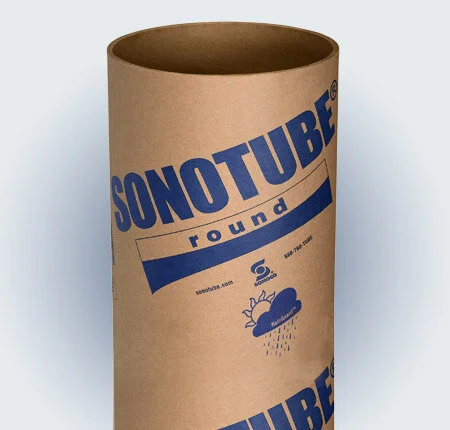Understanding Your Air Duct Inspection Report
Information on this page will help you understand terms and conditions described in your air duct inspection report.
West Texas Underground Cardboard Air Ducts:
What You Need to Know.
Cardboard sonotube was originally produced as form material for pouring concrete pier footings for pier and beam home construction prior to 1953. After 1953, builders were being forced to construct new concrete slab homes in order to save the forests and save money and remain competitive in the building market. These new building plans for concrete slab homes called for underground conduction of conditioned air. The builders decided to use the cardboard sonotube as air conditioning duct work and strengthened it by pouring concrete around the outside of the cardboard tube. What was not widely known at the time was concrete is not moisture vapor proof and this moisture vapor would cause the eventual destruction of the sonotube product.
Furthermore, builders were not aware of the mildew, fungus and mold issues that would arise from paper products exposure to moisture and the resulting allergy problems this would create for the home's occupants. Moisture also invites subterranean termites to feast unseen on their favorite food source - paper mixed with a little glue as a sweetener. When an underground termite colony finds water and food in close proximity, they settle in for the long feast. That is why it's so important to control water, to avoid excess accumulations around the perimeter of and under your home. Make sure that flower beds don't capture rain water and allow ponding next to the footings. Make sure soil slopes away from the footings. Make sure rain gutter down spouts discharge rain water at least 6' away from the footings.
Find out more about sonotube at www.sonotube.com
Foil Release
The foil lining on the inside of the carboard sonotube has loosened and fallen off inside the duct.
Terminate Damage
Unless otherwise listed, termite damage usually refers to old termite damage. Any observed termite damaged seen now was likely done at an ealier time and no acvite termites were observed during the inspection.
Water Intrusion
Either standing water was observed during the time of the inspection, or signs of old water damage from staining and dried water lines were observed during the inspection. Your inspection report will specifically list any active water leaks, sewer leaks, or wet ducting.
Subsurface Moisture
Either damp conditions were observed at the time of the inspection or duct component deterioration that is indicative of prior exposure to high moisture conditions was seen.
Duct Collapse: Hard Pinch
A hard pinch in the sonotube is a result of extremely high moisture or direct water intrusion that has caused the sonotube to soften and sag under its own wet weight. Later when it has dried, the deformed sonotube has harden into the deformed state creating a blockage in the ducting. In this situation air flow has usually stopped completely and jack hammering the slab to reach the pinch is the only recourse.
Duct Collapse: Soft Collapse
A soft collapse has resulted from years of moderate moisture levels which cause the sonotube to unravel in thin spiraling layers. With time, dust, dirt, lint, pet hair, human hair, carpet fuzz, etc. accumulate with the tangle of spirals to seriously reduce the air flow or even stop it completely. Our camera equipment will push through this debris, but airflow through the will be greatly reduced or completely blocked. During the heavy debris removal phase of a restoration, we will remove this type of debris.
Sonotube Deformity
Exposure to moisture and drying has weakened the sonotube's glue allowing it to come apart in spirals. As a result, the sonotube has become misshapen due to contiual moisture exposure.
Metal Failure
Metals parts are rusted so badly that holes are present allowing dirt to fall into the ducting.
Dirt Piles
Accumulations of raw earth brought in by component failure, flooding, water, or small animals. Dirt can accumulate from termite activity as well.
If you did not find an answer on this page and still have questions after reading your inspection report, please don’t hesitate to give us a call! You can reach Alan on his cell phone at 806-549-1849 or send us an email through the contact form.




